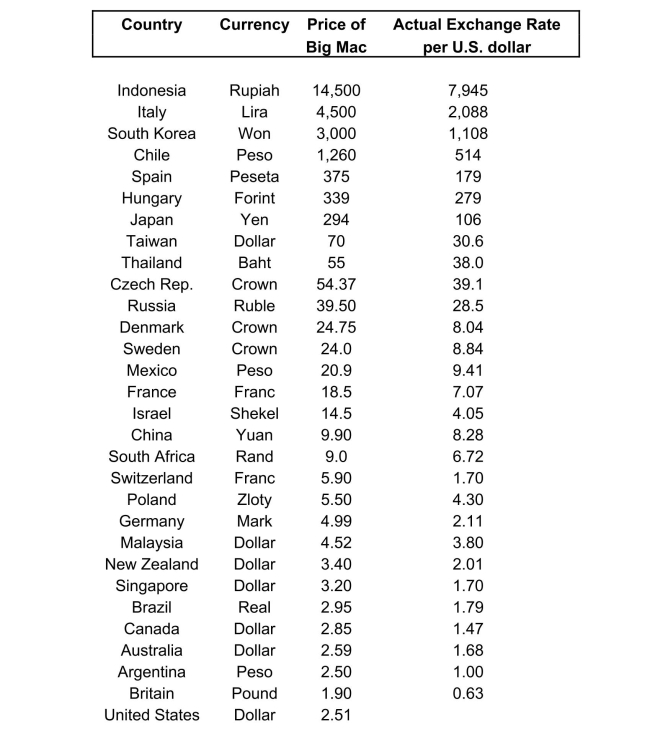Essay
(continuation with the Purchasing Power Parity question from Chapter 4)
The news-magazine The Economist regularly publishes data on the so called Big
Mac index and exchange rates between countries.The data for 30 countries from
the April 29, 2000 issue is listed below:  The concept of purchasing power parity or PPP ("the idea that similar foreign and domestic goods ... should have the same price in terms of the same currency," Abel, A. and B. Bernanke, Macroeconomics, edition, Boston: Addison Wesley, 476) suggests that the ratio of the Big Mac priced in the local currency to the U.S. dollar price should equal the exchange rate between the two countries. 16
The concept of purchasing power parity or PPP ("the idea that similar foreign and domestic goods ... should have the same price in terms of the same currency," Abel, A. and B. Bernanke, Macroeconomics, edition, Boston: Addison Wesley, 476) suggests that the ratio of the Big Mac priced in the local currency to the U.S. dollar price should equal the exchange rate between the two countries. 16
After entering the data into your spread sheet program, you calculate the predicted
exchange rate per U.S.dollar by dividing the price of a Big Mac in local currency
by the U.S.price of a Big Mac ($2.51).To test for PPP, you regress the actual
exchange rate on the predicted exchange rate.
The estimated regression is as follows: (a)Your spreadsheet program does not allow you to calculate heteroskedasticity
robust standard errors.Instead, the numbers in parenthesis are homoskedasticity
only standard errors.State the two null hypothesis under which PPP holds.Should
you use a one-tailed or two-tailed alternative hypothesis?
Correct Answer:

Verified
In addition to the standard three least ...View Answer
Unlock this answer now
Get Access to more Verified Answers free of charge
Correct Answer:
Verified
View Answer
Unlock this answer now
Get Access to more Verified Answers free of charge
Q17: In order to formulate whether or not
Q27: In many of the cases discussed in
Q34: If the absolute value of your calculated
Q41: Under the least squares assumptions (zero
Q43: Consider the following two models involving
Q44: For the following estimated slope coefficients
Q47: You recall from one of your
Q49: Assume that the homoskedastic normal regression
Q51: Changing the units of measurement obviously
Q58: The effect of decreasing the student-teacher ratio